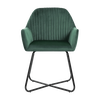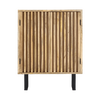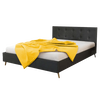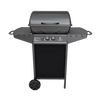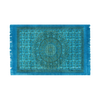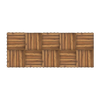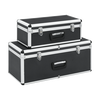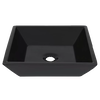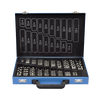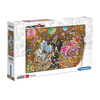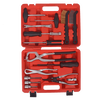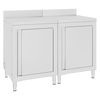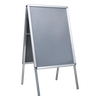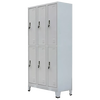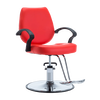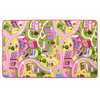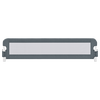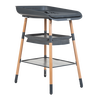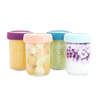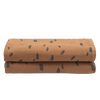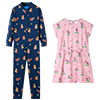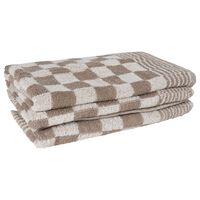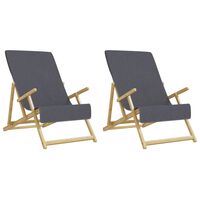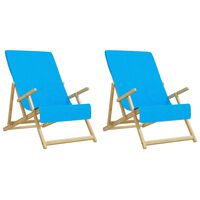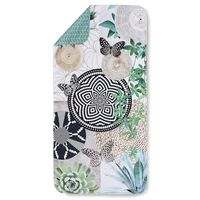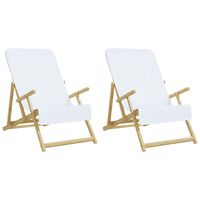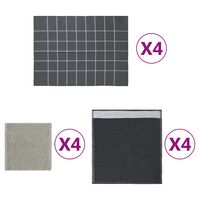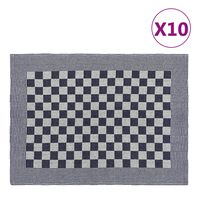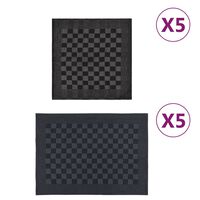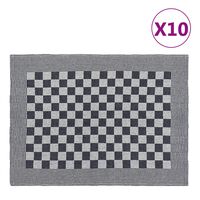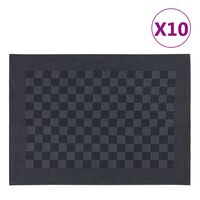Selecting the right towels for your home
Choosing the right towels is not easy if you decide to do it right. You might be tempted to go for cheaper options in your local furniture store, but finding the best towels with the right fluffiness, durability, and drying ability requires time and effort. Surprisingly, some of the fluffiest and biggest towels aren’t the best.
A good towel should dry quickly and feel good on your skin, look good on your décor and be durable enough to last for several years. However, some people find some towels more comfortable than others. Therefore, it’s always best to touch a towel to see how it feels. But not everyone wants to go around touching towels. So, if you’re shopping online or don't know what to look out for, there are a few guidelines you must follow to select the right towel. This easy guide covers the most important points to take into account when looking for towels.
What material should you choose for your towels?
When it comes to choosing a town, the most important factor to keep in mind is absorbency. As such, selecting the right towel material is crucial. Your choice of material will also determine the softness and durability of your towel. Here are the most common materials you can choose for your bath towels.
Cotton
By far the most popular material for towels, cotton is soft and extremely absorbent. It can absorb about 25 times its weight in liquids. Cotton is also breathable – its fibres allow air to pass through. Most importantly, it's soft on the skin. Towels made from cotton are also available in various colours and choices. Due to its high absorbency, cotton is easy to dye, making it a versatile fabric choice. However, not all cotton towels are the same. Egyptian and Turkish cotton make the softest and most absorbent bath towels.
Linen
Linen is another great material for towels. Whether you need them for yourself or the guest's bathroom, linen towels rank up there with the best towels in the market. As a natural material, linen is softer and more absorbent. Linen towels may look thinner than their cotton counterparts, but they are sturdier and absorb more water. This explains why linen is widely used in making hand towels.
Microfiber
Microfiber towels are popular among sports and travellers because they are fast drying, absorbent, antimicrobial, and take less space when folded. Towels made from this synthetic material are more slender than cotton ones, yet they absorb an astonishing amount of water because of their finely woven structure. Because they dry faster, they are less at risk of mould and mildew growth. In addition, microfiber has exceptional dirt-catching abilities, making it a good option for dusting homes, wiping down kitchen counters, or even cleaning a car's exterior and interior. Microfiber towels are also economical because they will last for many years. However, they are less absorbent than cotton towels.
Other synthetic materials
Apart from microfiber, you can also find towels made from other synthetic materials like polyester, nylon, and micro satin. These materials are often blended with cotton, resulting in a fluffier and softer towel. Another advantage of these towels is that they are more stain-resistant, which makes them great for regular use. They are also sturdy, durable, and cheaper than those made from natural products. However, they are less absorbent than 100% cotton towels.
What types of towels are there to choose from?
There are many types of towels depending on their material, purpose, thickness, and size. Here are the most common types of towels you need in your home.
Bath towels
Probably the most common type, bath towels come in soft, sturdy, and absorbent materials like cotton, polyester, and linen. They are usually large enough to wrap around your body. You'll mostly find them in towel bars inside or outside the bathroom. Bath towels come in different sizes to suit your taste and preference.
Hand towels
These towels are meant to do just what their name suggests – dry off hands after washing. They are often an afterthought until you wash your hands and start wandering around the house with wet hands, looking for something to dry them. Hand towels are smaller in size and are often hooked on bars or rings in the bathroom, kitchen, or over the sink. Most hand towels are made from cotton, linen, and cotton polyester blend.
Face towels
Drying your hair and face using the same towel is not recommended. By doing so, you transfer product residue, oil, and bacteria into your pores, leading to acne. A face towel is absorbent, soft, and gentle on the skin, leaving you clean and fresh. You should also use it to remove makeup before going to bed. Face towels are usually smaller in size and square in dimension.
Kitchen towels
The kitchen towel is one of the most hard-working members of a household. It’s often used to dry hands, wipe counters, dry dishes, pull baked foods from the oven, and so much more. They are some of the toughest towels you can find in a home. Since kitchen towels are multipurpose, you have plenty of options to choose from. You can select options that match the overall theme to enhance your décor.
Beach towels
Beach towels are about the same size as regular bath towels but are often made from different materials. These towels have a flat weave construction, which makes them look thinner than other towels. However, they take up less space in your beach bag and dry fast. Given outdoor towels are designed for outdoor use, they don't fade in the sun like other towels.
Hair towels
Hair towels are known for their excellent moisture-wicking ability. Wrap your tresses into the towel to dry them faster. Most hair towels are made from cotton and linen.
What towel size is best?
Buying a towel is much easier if you know what material to choose, but you may get stuck on what size you need. Before you run to measure your towel, let’s look at the standard sizes of towels so you can choose one that suits your requirements.
Regular bath towels are usually 69 x 132cm. Keep in mind that these measurements may vary from one brand or manufacturer to the other. Hand towels measure 38 x 64cm to 46 x 76cm. Hand towels are usually large enough to be used as hair towels.
Square in shape and the smallest of all, face towels measure 33 x 33cm. Baby washcloths are the same size as face towels but have a high absorbency and are thicker. Bath sheets are larger than regular bath towels, measuring about 90 x 178cm. They are ideal for taller people. However, since they are large, they take up more space and require more time to dry.
On the other hand, beach towels are thinner, measuring approximately 76 x 152cm. They are also wider than bath towels and come in a wide range of patterns and prints.
What is GSM, and why does it matter in towel selection?
By now, you know that some towels are thinner while others are thicker. Essentially, this refers to the language used to describe the weight of the towel. You’ve probably seen the letters ‘GSM’ in towels before. This abbreviation stands for “grams per square meter", and refers to the weight of fabrics.
GSM is used to measure the thickness of bath towels. So, thick and fluffier towels have a higher GMS, and vice versa. The standard GSM value for most towels is 300 – 900. Towels can be placed into three categories depending on their GSM value.
-
Thinner and lighter towels like beach, kitchen, and travel towels are on the lower end (300 – 400).
-
Medium-weight towels have a GSM of 400 to 600. This is the standard weight of towels you use daily, like bath, hand, and face towels.
-
Heavier and fluffier towels have a GSM range of 700 – 900. These towels have high absorbency and take longer to dry.
Keep in mind that GSM is only a measurement of the weight of a towel, not its quality.
How to wash and dry your bath towels properly
Cleaning your towels properly will keep them clean and prolong their life.
Washing
Cotton towels can be machine-washed. Use a mild detergent and cool water and tumble dry low. It’s also important to separate your bath towels by colour. Besides water, towels absorb dyes easily from other items in the washing machine.
Therefore, if you have white towels, rinse them with other white towels to prevent the colour from discolouring. If you’re washing coloured towels, avoid dye transfer by running towels of the same colour in a cycle. However, do not overload the washing machine because towels are made from absorbent material and will take longer to dry. Other materials like linen and synthetic can also be machine washed.
Drying
When it comes to drying, you have to strike a balance. Towels must be fully dried to avoid mildew but should not be over-dried, as this destroys their fibres. So, use the lowest dryer settings. Also, watch out for overheating as this tightens fibres in the towels. It’s also not recommended to dry synthetic fibres like polyester and microfiber in the dryer. They will stiffen and lose their absorbency. The best way to keep them soft is to dry them in the air.
Shop towels at vidaXL
Here at vidaXL, we have a large collection of top-quality towels in different materials, sizes, and colours. Whether you're looking for a small face towel or a large bath towel for your guests, you can find it here. We get all our towels from leading industry brands, so you're guaranteed superior quality products that will last for many years. Browse our collection to find the best towels for your home.

